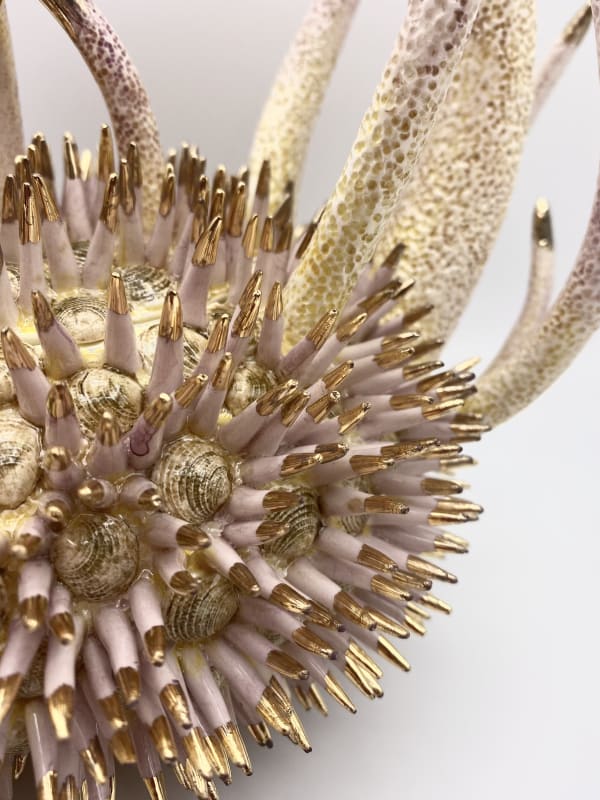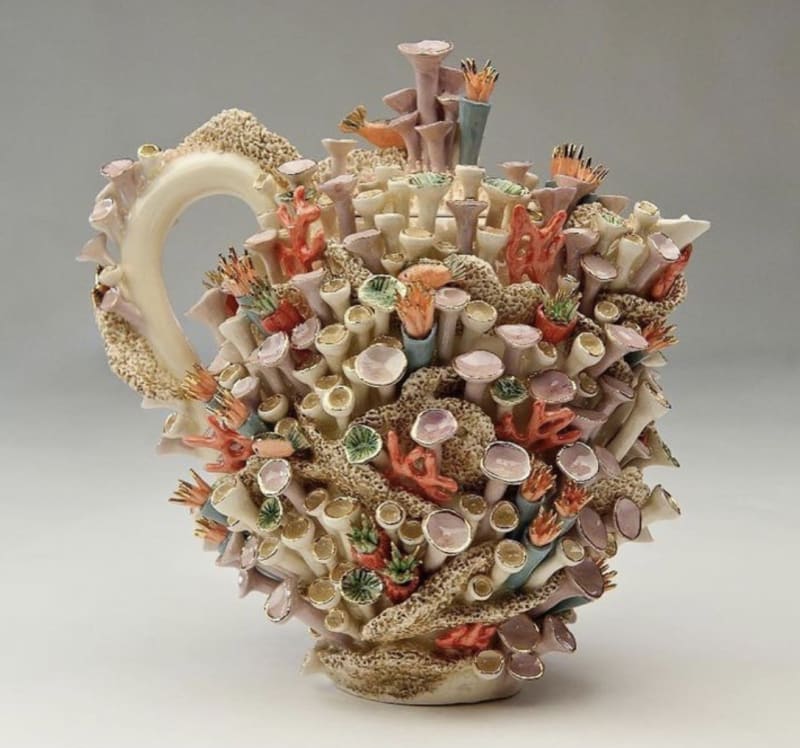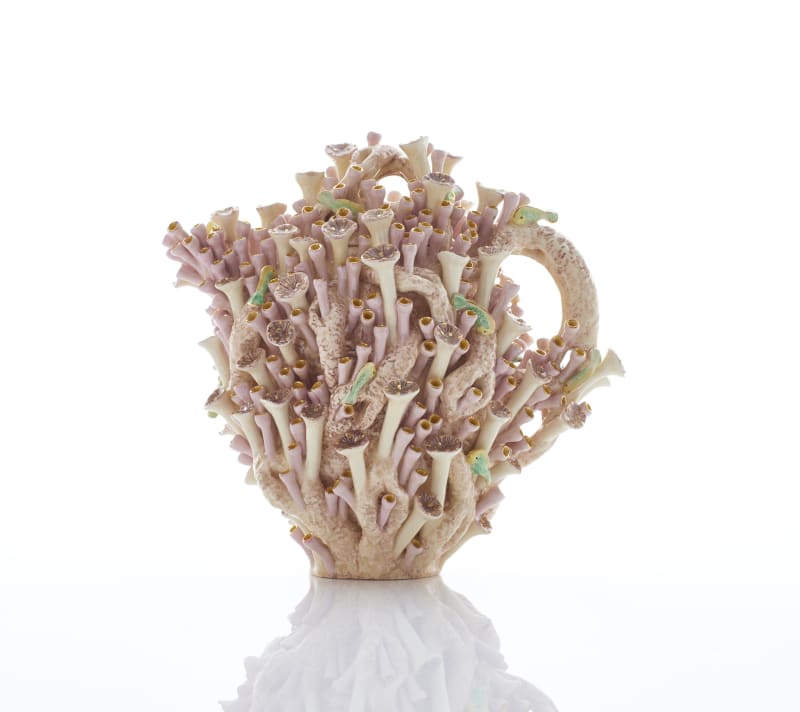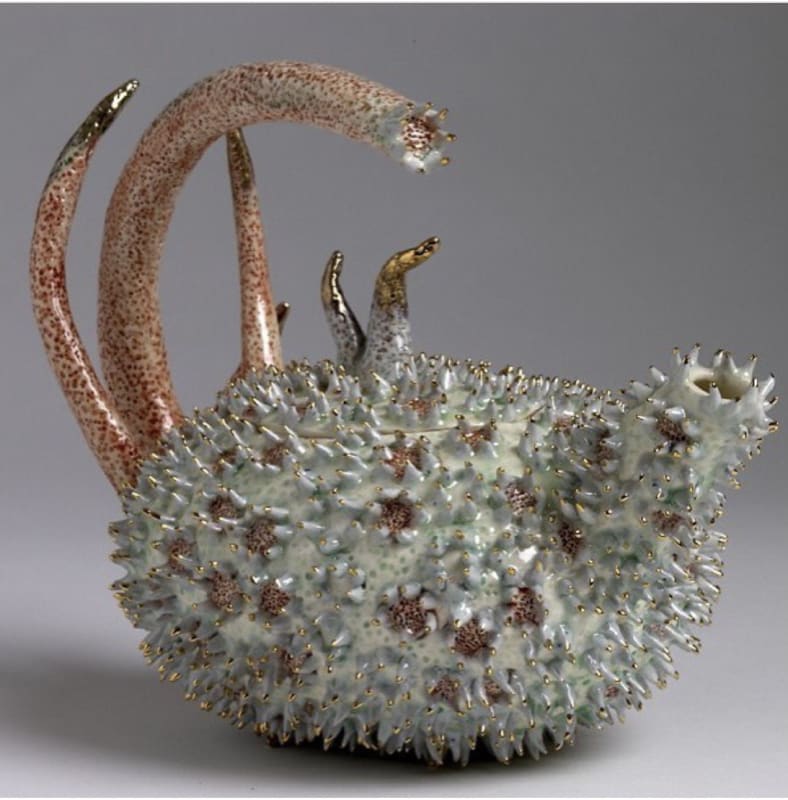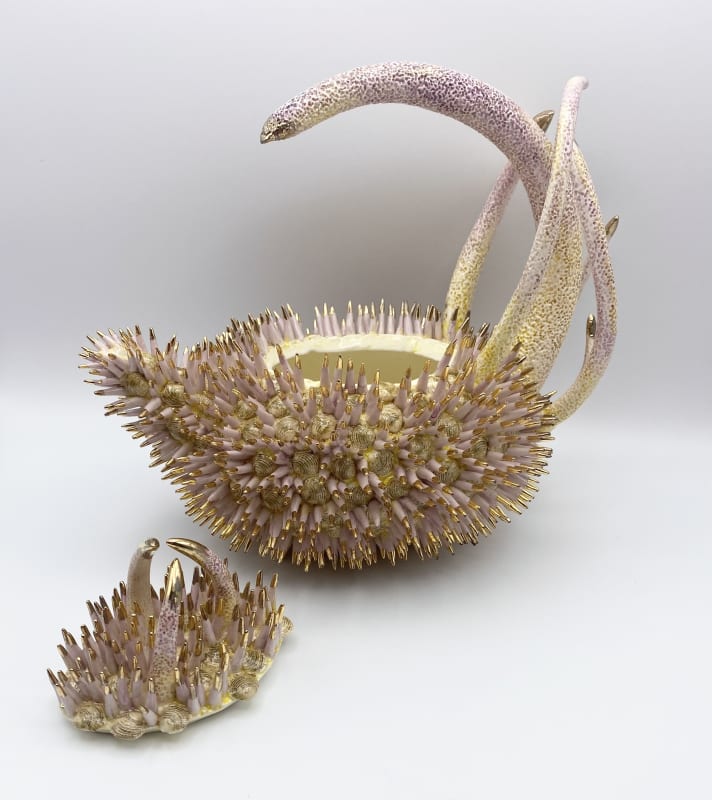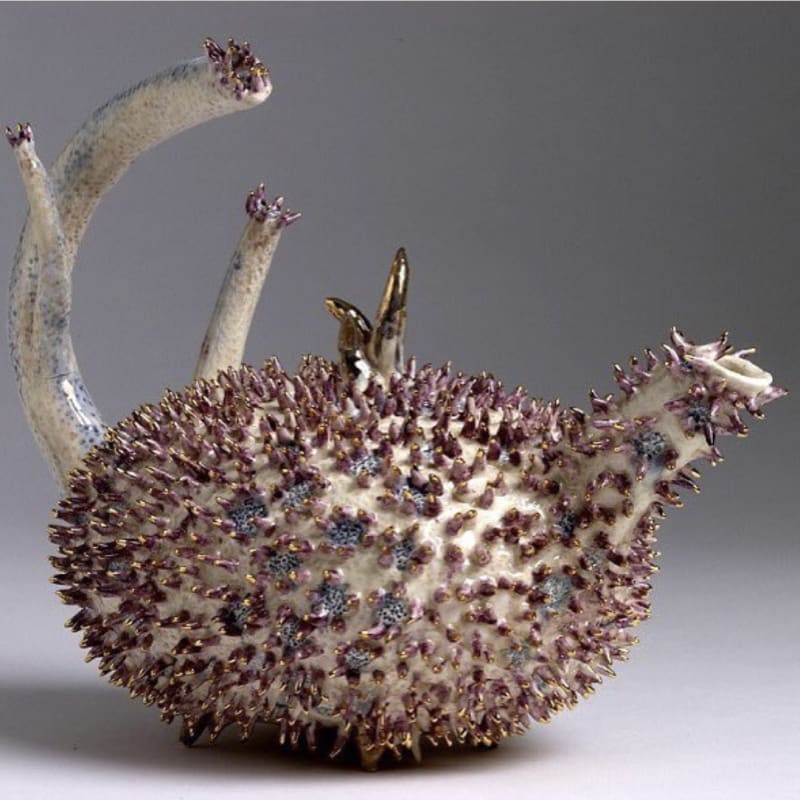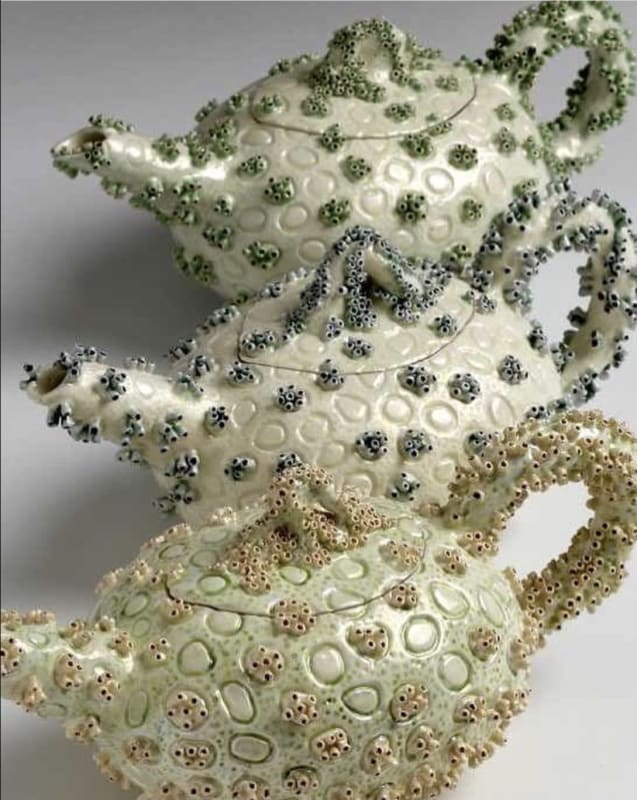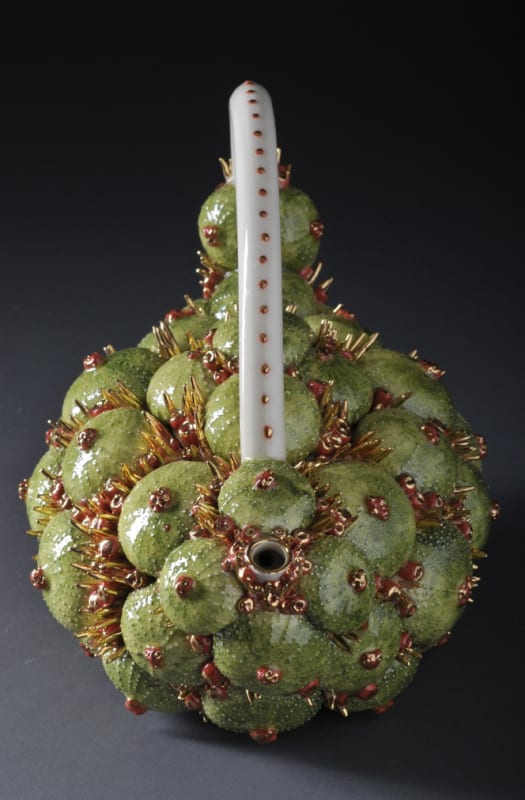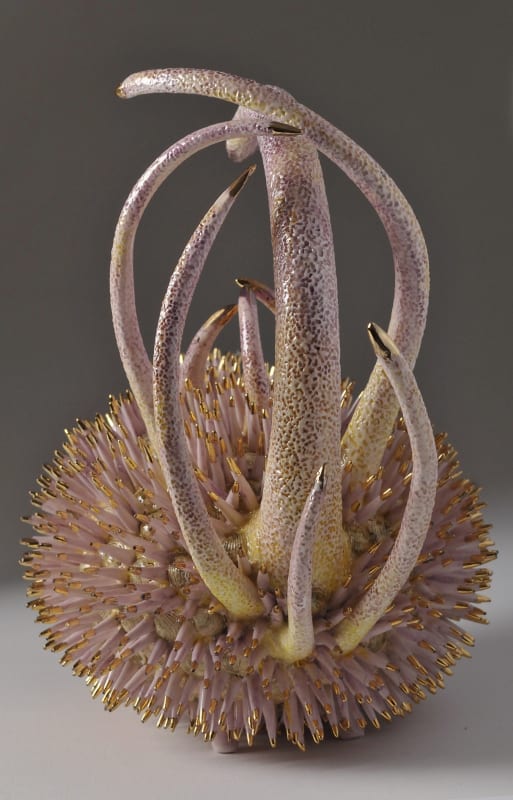As Faberge elevated the humble egg, Delfina Emmanuel elevates the teapot to new heights. Inspired by Faberge but working in porcelain, Emmanuel's interpretation of this humble vessel transports it into the realms of fine art.
At CAA discover some of the finest and most extordinary examples of the most ubiquitous of all utensils: the teapot.
From discovering the tea plant (Camelia Sinensis) in southeast China over 3000 years ago, tea has become the world's most consumed beverage after water. Tea has a long and global history stretching across centuries and continents.Tea leaves were initially chewed, or ground into a fine powder to be added to hot water in tea bowls, which were placed on lacquer or porcelain stands. By the 1st century BCE, people in China began boiling tea leaves, but it wasn't until the 14th century that today's most common preparation was established: steeping tea leaves in hot water. Experts generally agree that the teapot dates back to around 1500 AD, with the emergence of Yixing teapots in China. Using the iconic purple and red clay from Yixing in the eastern province of Jiangsu, potters crafted small individual teapots with the handle and spout design we know today.
Delfina Emmanuel grew up surrounded by the traditions and perfumes of Sardinia, a land rich in marine life. Her teapots reflect the gentle flowing of the living creatures found in the seabed: protruding coral structure tentacles, the huge variety of these porous sponges, the ways in which they take different shapes and the porosity and patterns of their surface.
Emmanuel hopes that the interpretation she has given to her artwork provokes a glorious escapism and thoughts of the ocean and its fragility.
Each handbuilt teapot represents over a hundred hours in the studio and at least 3 firings in the kiln.

